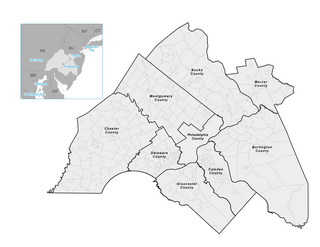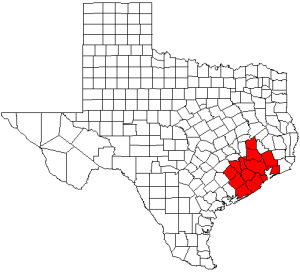
Transportation planning is the process of defining future policies, goals, investments, and spatial planning designs to prepare for future needs to move people and goods to destinations. As practiced today, it is a collaborative process that incorporates the input of many stakeholders including various government agencies, the public and private businesses. Transportation planners apply a multi-modal and/or comprehensive approach to analyzing the wide range of alternatives and impacts on the transportation system to influence beneficial outcomes.
Councils of governments are regional governing and/or coordinating bodies that exist throughout the United States. CoGs are normally controlled by their member local governments, though some states have passed laws granting CoGs region-wide powers over specific functions, and still other states mandate such councils.
Metropolitan Washington Council of Governments (MWCOG) is an independent, nonprofit association where area leaders address regional issues affecting the District of Columbia, suburban Maryland, and Northern Virginia. MWCOG comprises 24 local governments in the Washington metropolitan area, as well as area members of the Maryland and Virginia state legislatures, the U.S. Senate, and the U.S. House of Representatives. About 300 local, state, and federally elected officials make up its membership. It was founded in 1957 and formally incorporated on May 28, 1965.

The Intermodal Surface Transportation Efficiency Act of 1991 is a United States federal law that posed a major change to transportation planning and policy, as the first U.S. federal legislation on the subject in the post-Interstate Highway System era.

The National Highway System (NHS) is a network of strategic highways within the United States, including the Interstate Highway System and other roads serving major airports, ports, military bases, rail or truck terminals, railway stations, pipeline terminals and other strategic transport facilities. Altogether, it constitutes the largest highway system in the world.

The Delaware Valley Regional Planning Commission (DVRPC) is the metropolitan planning organization for the Delaware Valley. Created in 1965 by an interstate compact, DVRPC is responsible for transportation and regional planning in the greater Philadelphia area.

The Houston-Galveston Area Council (H-GAC) is the region-wide voluntary association of local governments in the 13-county Gulf Coast Planning Region of Texas. The organization works with local government officials to solve problems across the area. H-GAC was founded in 1966.
The Illinois Department of Transportation (IDOT) is a state agency in charge of state-maintained public roadways of the U.S. state of Illinois. In addition, IDOT provides funding for rail, public transit and airport projects and administers fuel tax and federal funding to local jurisdictions in the state. The Secretary of Transportation reports to the Governor of Illinois. IDOT is headquartered in unincorporated Sangamon County, located near the state capital, Springfield. In addition, the IDOT Division of Highways has offices in nine locations throughout the state.
The Lexington Area Metropolitan Planning Organization (MPO) has been involved with transportation planning in Lexington, Kentucky, USA, and its immediate area since being established in 1974. It is responsible, in cooperation with the Kentucky Transportation Cabinet, for planning and coordinating all aspects of transportation planning on behalf of local governments within its region, which includes the Lexington-Fayette Urban County Government and Jessamine County.
The Massachusetts Department of Transportation (MassDOT) oversees roads, public transit, aeronautics, and transportation licensing and registration in the US state of Massachusetts. It was created on November 1, 2009, by the 186th Session of the Massachusetts General Court upon enactment of the 2009 Transportation Reform Act.

The Denver Regional Council of Governments is a nonprofit membership organization of local governments in the Denver region of the US state of Colorado. DRCOG is the designated metropolitan planning organization (MPO) and the Transportation Planning Region (TPR) for the region, as well as the Area Agency on Aging (AAA).
The Capital Area Metropolitan Planning Organization (CAMPO) is the federally mandated metropolitan planning organization (MPO) responsible for comprehensive transportation planning in the Austin, Texas, USA area, including Williamson, Travis, Hays, Bastrop, Burnet and Caldwell counties. CAMPO is one of 25 Texas MPOs.
The North Carolina Capital Area Metropolitan Planning Organization (NC CAMPO) is the federally required Metropolitan Planning Organization responsible for the continuous and comprehensive transportation planning process in Wake County and parts of Franklin County, Granville County, Harnett County and Johnston County Counties. NC CAMPO is responsible for carrying out an annual work program that includes updating the Metropolitan Transportation Improvement Program (a seven-year project programming schedule) and the Long-Range Transportation Plan (a minimum twenty-year forecast of projects and programs).
The Chicago Metropolitan Agency for Planning (CMAP) is a metropolitan planning organization (MPO) responsible for comprehensive regional transportation planning in Cook, DuPage, Kane, Kendall, Lake, McHenry and Will counties in northeastern Illinois. The agency developed and now guides implementation of ON TO 2050, a new long-range plan to help the seven counties and 284 communities of northeastern Illinois implement strategies that address transportation, housing, economic development, open space, the environment, and other quality-of-life issues.
The Puget Sound Regional Council (PSRC) is a metropolitan planning organization that develops policies and makes decisions about transportation planning, economic development, and growth management throughout the four-county Seattle metropolitan area surrounding Puget Sound. It is a forum for cities, towns, counties, transit agencies, port districts, Native American tribes, and state agencies to address regional issues.
The New York Metropolitan Transportation Council (NYMTC) is the metropolitan planning organization for New York City, Long Island, and the lower Hudson Valley. It is a federally mandated planning forum to allow the ten counties it represents to coordinate the use of federal transportation funds. NYMTC was created in 1982 after the disbanding of the Tri-State Regional Planning Commission, a metropolitan planning organization for the states of New York, New Jersey, and Connecticut. Unlike most other Metropolitan Planning Organizations (MPOs) in the United States, NYMTC's staff are all employees of the New York State Department of Transportation.
The North Jersey Transportation Planning Authority (NJTPA) is the federally authorized metropolitan planning organization (MPO) for the 13-county northern New Jersey region, one of three MPOs in the state. NJTPA's annual budget is more than $2 billion for transportation improvement projects. The Authority also participates in inter-agency cooperation and receives public input into funding decisions. The NJTPA sponsors and conducts studies, assists county planning agencies and monitors compliance with national air quality goals. The Authority provides federal funding to support the planning work of its 15 subregions. The funds are matched by a local contribution. As vital partners in regional planning work, the subregions help bring a local perspective to all aspects of NJTPA's work to improve the northern New Jersey transportation network.
The Sustainable Communities and Climate Protection Act of 2008, also known as Senate Bill 375 or SB 375, is a State of California law targeting greenhouse gas emissions from passenger vehicles. The Global Warming Solutions Act of 2006 sets goals for the reduction of statewide greenhouse gas emissions. Passenger vehicles are the single largest source of greenhouse gas emissions statewide, accounting for 30% of total emissions. SB 375 therefore provides key support to achieve the goals of AB 32.
There are three metropolitan planning organizations (MPO) in New Jersey. The organizations are the main decision-making forums for selecting projects for the Statewide Transportation Improvement Program (STIP) in deliberations involving the New Jersey Department of Transportation (NJDOT), the New Jersey Transit Corporation (NJT), county and municipal transportation planners and engineers, other transportation implementing agencies, the public and elected officials at the state, county, and municipal levels.

In Connecticut, councils of governments, also known as COGs, are regional planning organizations that bring together the chief elected officials or professional managers from member municipalities in Connecticut. Since 2015 and 2022, the Connecticut planning regions served by COGs have been recognized as county equivalents under state and federal law respectively, superseding the eight legacy counties in the state for most federal funding and statistical purposes.







